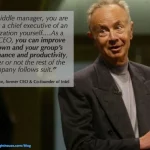Learned helplessness. What comes to mind when you hear that phrase? Probably nothing good.
The phrase comes from studies by psychology researcher Martin Seligman. His studies showed that animals (including humans) were susceptible to giving up all hope when put in an environment where negative outcomes were beyond their control.

Electric shocks and losing hope.
In Seligman's most notorious and controversial study, he gave dogs electric shocks:
- One group could stop the shocks by pushing a lever.
- The other group could not control the shocks.
Both groups were then put in a box they could easily jump out of and shocked again. While the first group jumped out of the box without issue, those who had just been in an environment where they had no control over the shocks did not jump to escape the shocks. The "no control" group laid and took the shocks.
This sort of behavior was repeated with rats, and since humans have shown similar habits of learned helplessness.
Today, we will help you better understand this phenomena and how it can apply to unfortunate situations at work.
Table of Contents for Learned Helplessness at Work:
- How Learned Helplessness Applies to Employee Engagement & the Workplace
- How to Fix Learned Helplessness

Learned Helplessness at Work: How it Impacts Employee Engagement
What we learn from the concept of Learned Helplessness is that if you put a person in an environment where bad things happen to them, and they have no control to stop them, depression and disengagement will eventually follow.
Does this sound like a workplace you, a friend, or a family member has ever experienced:
- Politics prevent you from getting work you're passionate about done.
- Problems that make your work miserable don't change because you're unable to address it yourself and no one else seems to care.
- A vicious boss or colleague dumps work on you, blames you for problems, or publicly embarrasses you repeatedly.
- Your manager sets unrealistic deadlines pressuring you to work unsustainable hours to try to do the impossible.
- A rotten, unethical culture repeatedly exposes you to behaviors dramatically inconsistent with your own values.
Those aren't electric shocks, but in many ways can feel just as painful emotionally.
Whether you are an optimist or pessimist can affect your tolerance level for these sorts of problems. However, eventually, anyone will lose hope and disengage when put in an environment in which they can't control bad things happening to and around them.

"Assholes breed like rabbits."
It doesn't take long for behavior from even a small group of people to start creating a toxic work environment. And as Robert Sutton asserts in his best-selling book, The No-Asshole Rule, when that behavior is tolerated, it will spread.
As it spreads, it creates the perfect storm to feel helpless. Previously engaged, happy, hard-working employees will find it harder and harder to do their job. At some point they'll give up, whether that means going through the motions to collect a paycheck, or leaving your company.
A story: Friendly support falters
A friend of mine worked at a company on their customer support team. They were exactly what a great support person needs to be: very detail oriented and loved helping customers succeed. They built strong relationships with many of the most important customers at the company.
Then one day the product started having serious issues. Suddenly, they were flooded with support requests and no way to help them.
While engineering promised they were working on it, after a few months of empty promises it really started wearing on them. They felt saying things would be fixed was a false promise to the customers whose faith they had worked so hard to earn.
At this point, learned helplessness took over. They started doing the minimum effort on support and disengaged. Work they had loved was no longer fun.
Eventually, they became so depressed, they burnt out and quit. After some time off, their optimism and positive outlook returned and they joined another company. However, they and the company they worked for both lost.
Stories like this are all too common. It's why bad companies "burn and churn" through employees.
It doesn't have to be like this.
Worried your team might be disengaging? Want to know how you're doing as a manager in the most essential areas for engagement?
Then sign up to get your Manager Score now here. Built with the latest research and best practices like this post, it helps you understand where you stand with your team. Learn more and get started here.

How to Fix Learned Helplessness in the Workplace
As Andy Grove remarks in his legendary book on management, High Output Management, as a manager you have the power to make things better for your team. If the rest of the organization is working against you, or doesn't care like you do, it will be harder, but there's still much you can do.
If you're in an environment where it seems like someone on your team (or all of them) are developing learned helplessness, here's some tactics to apply.

1) Shield your team as much as you can.
Just because you're facing tough challenges does not mean your team has to face all of them, too. As the cartoon from Julie Zhuo, former VP of Product Design, shows, a great manager shields their team.
This can take a variety of forms as discussed in this excellent post on the Harvard Business Review by Stanford PhD and best selling author, Robert Sutton:
- Slay—or Slow—Their Enemies:
"Good bosses also protect their people from demeaning, overly demanding, and frustrating clients and customers.
...Ann Rhoades, former head of "People” at Southwest, described how a fellow executive earned the loyalty of several gate agents by interrupting a nasty customer, telling the jerk that he wouldn't permit his people to be treated that way, and then marching him to an American Airlines counter to buy him another ticket." - Take the Heat:
"Former New York Yankees manager Joe Torre was beloved by his coaches and players. When the late owner George Steinbrenner became too pushy or critical, Torre deflected the pressure from them to himself.
...Steinbrenner invited himself to a meeting of the coaches the afternoon before a playoff game and was driving them nuts by second-guessing decisions. Torre ended these antics by shouting, "Get out of there, George! Don't f#$% them up.” Steinbrenner laughed and left."
You cannot shield your team from everything, but even a few visible, key efforts can go a long way towards building loyalty with your team. This will pay dividends when you have important asks of your team, or other things beyond your control strike. You'll also reduce the likelihood of any of your team members feeling learned helplessness.

2) Give them hope with the Progress Principle.
Remember the most important lesson from Learned Helplessness: it's the feeling of having no control that causes people to give up. When hope is lost, so is your employee.
The best thing you can do for your team is give them reasons to stay hopeful and optimistic. The best way to do that is to leverage the Progress Principle.
Teresa Amabile and Steven Kramer, PhDs from Stanford and the University of Virginia respectively, wanted to answer the question of what makes people happiest at work for the long haul. What they found (as the image above highlights) is that making progress day to day is what makes people happiest.
When you find your team is struggling, or getting frustrated, look for ways to help them make small, incremental progress:
- Remove a blocker: Help fight to get them approval on something that's blocking their progress.
- Refocus efforts: If they're stuck in one area, help them make progress in another part of the project.
- Ask for forgiveness, not permission: Similar to the shielding described above, make a decision and take responsibility so your team can move forward.
- Make progress elsewhere: Look for ways they can make progress on something else important to them besides the project they're frustrated about.
- Help them with career development: It's the #1 perk people want at work, a leading cause of turnover, and an essential part of anyone's work life, so a great place to feel progress.
If in doubt, ask yourself, "what's 1 small way they can make progress today?" Even a little momentum can be the difference between losing hope, and staying engaged.
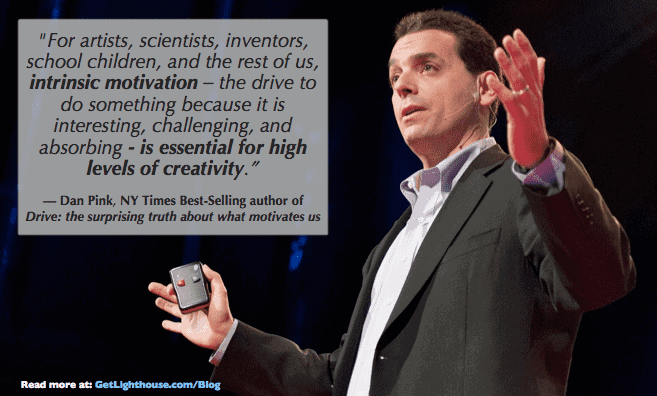
3) Empower them with intrinsic motivation.
Money is not the only way to motivate people. In fact, many studies show it actually hurts effectiveness on more complex and creative-demanding tasks. For managers who often have limited budgetary control, this is good news.
When your team is frustrated and unhappy, look at what you can do to help with their intrinsic motivation. Dan Pink, author of Drive: the Surprising Truth About What Motivates Us, has a great TED talk on this subject:
The key is to realize how much control you have over the 3 areas of intrinsic motivation for your team: Autonomy, Mastery, and Purpose
- Autonomy - Let your team make decisions on their work as much as you can: how it's done, when, parts of how it looks, vendors used, etc.
- Mastery - Give your people opportunities to learn and grow. Help them expand their skills and learn from one another.
- Purpose - Make sure everyone on your team knows they're valued and why their work matters. Recognize your unsung heroes.
While you may not always be able to hit all three areas with everyone, keep them in mind as tools to be used when opportunities present themselves.
Be intentional. A little preparation and planning goes a long way. Find and create opportunities to put people in positive situations that tap into intrinsic motivation, and they're more likely to stay out of the danger zone of learned helplessness.

4) Help your employees develop grit.
It's not about everything being perfect. No job, no company, and no team ever will be.
However, it's important that people feel like there is momentum in the right direction.
As a leader, if you can help your team see positive outcomes and progress from their hard efforts, you'll teach them to be gritty. This will help you deliver great results and prevent them from giving up and slipping into learned helplessness.
How do I teach grit?
You might be wondering how grit can be taught. According to Angela Duckworth, author of the New York Times bestseller “Grit”, the mindset of having grit develops over time:
“...grit grows as we figure out our life philosophy, learn to dust ourselves off after rejection and disappointment, and learn to tell the difference between low-level goals that should be abandoned quickly and higher-level goals that demand more tenacity. The maturation story is that we develop the capacity for long-term passion and perseverance as we get older.”
Grit grows with experience. As you face challenges, and see you can overcome them, you’re more likely to handle your next challenge better. The more challenges you overcome in your personal and professional life, the more likely you are to become gritty.
Grit vs. resilience
In spite of the amount of research dedicated to it, there’s no precise, universally accepted definition of grit. It’s one of those more vague, squishy “soft skills” that we talk so much about on the Lighthouse blog.
However, a large part of grit is resilience – the ability to persevere in the face of difficulty. And, as opposed to grit, resilience has shown to be easier to study and train.
Unfortunately, it’s a rare skill – according to Aon’s the Rising Resilient Report, only 30% of employees are truly resilient. The rest tend to struggle: 52% don’t feel as if they belong in their workplace, and 55% feel like they can’t reach their full potential.
As a manager, it’s your job to identify those who struggle to overcome obstacles, understand where they’re coming from, and provide them with support.
To teach your team members resilience:
- Introduce them to the Growth Mindset. The essence of this winning mindset is the idea that anyone can learn anything. All it takes is hard work. Don’t allow your team members to get away with statements like: “But I’ve never done this thing before”, or “I wouldn’t even know where to start”. Instead, practice patience and guide them through creating a growth plan to help them learn how they can help themselves, while encouraging them as they make progress.
- Teach them to not fear making mistakes. Every setback is a learning opportunity. When a mistake happens, show your team members how to handle it by coming up with different solutions and working together on how to prevent it from happening again. When you go over these issues, focus on giving positive feedback as much as you can, to build your team member’s confidence and establish trust. Also, try to shield your team as best you can if others that are causing learned helplessness are overly critical of your team members, because it could set back your progress with them.
- Make sure your team feels psychological safety. It’s foundational to your relationship, but easy for you to miss. If your team doesn’t feel safe asking tough questions, bringing up concerns, and sharing their ideas, then it’s unlikely you’ll change anything. When people have learned helplessness is exactly when they stop bothering to share ideas or bring up issues. Even if they can’t bring things up with others in your company, acknowledging their ideas and making them feel heard can make sure your team continues to open up to you. This then can help you find small ways to make progress together, even in tough situations.
You have more power over learned helplessness on your team than you may think.
You cannot always fix all the ways your company or department are causing symptoms of learned helplessness for your team. However, there are always things you can do as a manager to shield, inspire, and motivate your team.
These can make all the difference for employees and how they work. And best of all, good team members will never forget this. They’ll see your efforts and reward you with the hard work and loyalty that will help you succeed as a leader for years to come.
I know many leaders who have made these sorts of extra efforts in tough times and then found that their team will follow them to many future companies they work at. That’s because it’s easy to be a good manager when times are good, but you really find out what someone’s grit and values are when times are tough.

What is an example of learned helplessness?
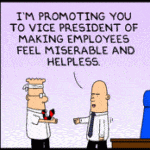
Learned helplessness is a term coined by psychology researcher Martin Seligman. His studies showed that both animals and humans are susceptible to giving up all hope when put in an environment where bad things happened to them that felt outside their control.
An example of learned helplessness in the workplace is giving up and disengaging when circumstances outside of your control, such as office politics, a vicious boss, unrealistic expectations, or a rotten company culture overwhelm you.
What is learned helplessness behavior?

Learned helplessness behavior occurs when a person repeatedly faces negative experiences due to factors outside of their control and that they cannot change.
When put in a bad environment they can't control, people tend to lose hope, disengage from the situation, or even feel depressed. They stop trying, even when opportunities to improve things come up later.
How do you help someone with learned helplessness?
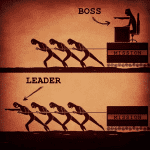
If you're in an environment where it seems like someone on your team (or all of them) are developing learned helplessness, here's what you can do to help them out of it:
- Shield them as much as you can. You can't protect your team from everything, but shielding them from some things can provide just the relief they need.
- Give them hope. When you find your team is struggling, or getting frustrated, look for ways to help them to make small, incremental progress.
- Empower them with intrinsic motivation. Find and create opportunities to tap into their creativity and the parts of their job they love.
- Help them develop resilience. Train your team to persevere in spite of difficulty by teaching them to have a growth mindset and providing psychological safety.
How do I know if I have learned helplessness?
What causes feelings of helplessness?
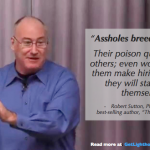
There are several factors that may cause extreme feelings of helplessness. When you repeatedly go through negative experiences due to things happening that are beyond your control, you may stop trying to do anything about it. When that’s the case, you may have developed learned helplessness.
Learned helplessness in the workplace may be caused by workplace politics that prevent you from doing work you feel passionate about. Another cause may be a toxic boss or ugly company culture that leaves you feeling used, overworked, or taken advantage of.
Learn what to do about learned helplessness here.

